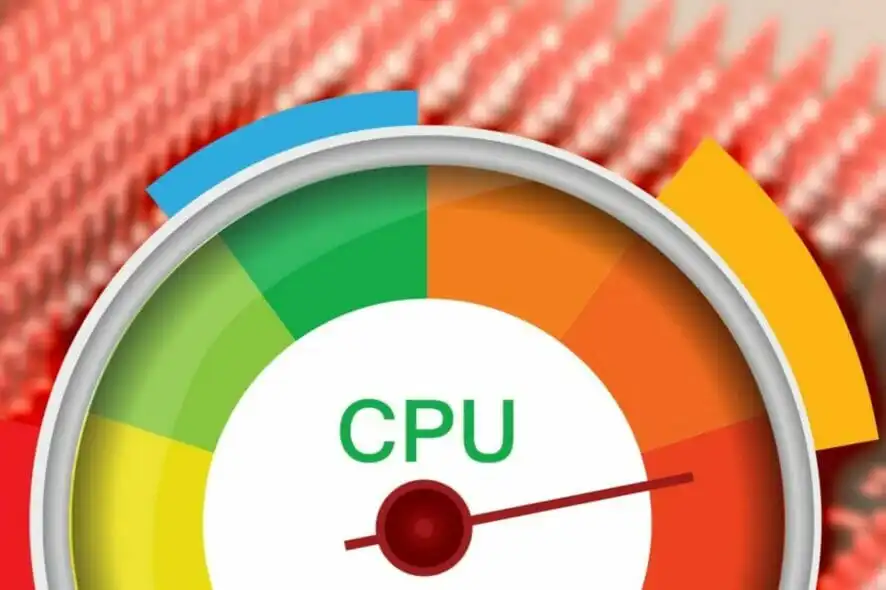A CPU’s maximum frequency is the highest frequency it can run at.Note that this is not the same as the CPU’s frequency, which is the number of times per second that the CPU runs.
A CPU’s maximum frequency is the highest frequency it can run at.
Should My CPU Be Running At Maximum Frequency?
You should not run your CPU at its maximum frequency all of the time. This is because it will overheat and eventually crash, which will lead to a loss of performance.
The optimal frequency depends on what programs are running on your system. For example, if you are watching a movie or playing video games, your CPU may be running at 20-90 percent of its maximum frequency.
However, if you are doing office work, it might be more beneficial for your CPU to run at a slower speed with less frequency than when you are playing games or watching movies.
How Do I Know My Maximum CPU Frequency?
CPU-Z is the best and easiest way to know the CPU maximum frequency. You can find the CPU’s maximum frequency by opening up your CPU-Z and looking at the top right. You’ll see it listed as “Maximum frequency”.
What Does Maximum Processor Frequency Do?
The maximum frequency of a CPU is the fastest it will run. Maximum frequency refers to the number of times per second that the CPU runs.
This is because CPUs normally have a lower limit to how many times they can clock themselves per second, which is called their maximum frequency.
Maximum frequency affects the speed of a computer’s performance in different applications or games. For instance, if you are playing a game on your computer and your CPU’s maximum frequency is 500MHz
then in order for the game to run smoothly, it needs at least 4500 cycles (cycles are how long each action happens).
More often than not, though, people will use this term to refer to how fast they are able to multi-task on their computers. If you have an Intel Core i7 CPU with a maximum frequency of 3GHz and you have 16 threads open on your computer at once, then it takes one second for each thread to be processed by the CPU.
Processing power also determines how quickly a computer can perform various tasks.
For example, if someone has an Intel Core i7 CPU with a maximum frequency of 3GHz and he/she wants his/her computer to calculate 100 million digits in 1 minute (this number is not even close),
then he/she would need 3 million million million cycles.
How Do I Reduce The Maximum Frequency Of My CPU?
To reduce the maximum frequency of a CPU, you need to lower the maximum clock speed. This will allow your CPU to run at a lower frequency and also reduce power consumption.
CPU Usage vs Maximum Frequency
Maximum frequency is the highest number of times the CPU will clock itself per second. CPU usage, on the other hand, is the percentage of time the CPU is actually running.
So, if you have a frequency of 3 GHz but your CPU usage is only 50%, then your CPU is only running at 1.5 GHz.
Is It Safe For My CPU To Run At Maximum Frequency?
There are certain limits that a CPU can reach in order to keep the heat generated by the CPU within a safe range. The frequency limit is one of these limits.
Depending on the type of CPU, this limit can be anywhere from 1-4GHz. If you continue to run your CPU at maximum frequency when this limit has been reached, there is a risk that your CPU will overheat and damage itself.
Why Is CPU At Max Frequency On Idle?
You might have applications running in the background causing it run at max frequency. Background processes make it seem the CPU is idle whiles it’s not.
Open task manager and check which applications are making your CPU run at max frequency by looking at the CPU section in the processors tab (both the apps and background processes).
What Can I Do If My CPU Is Always Running At Maximum Frequency?
If your CPU is always running at maximum frequency, it could be a sign of a hardware or software problem. If you have an Intel CPU and are experiencing this issue, this could result from a BIOS update gone awry.
If you’re using an AMD CPU and are experiencing this issue, make sure you’re using the latest BIOS version.
You can also check to see if your CPU is overclocked by looking up how much voltage it needs to run at certain speeds in a search engine such as cpuid.

Can I Limit CPU Maximum Frequency?
BIOS
Yes, you can limit CPU maximum frequency. AMD and Intel both have settings within the BIOS that allow you to set the CPU’s default frequency.
With AMD, go to the “Advanced Mode” of the BIOS, go to “AMD Overdrive,” and then set the default CPU frequency (the frequency your CPU will run at if you don’t change it).
With Intel, go to “Advanced Mode,” then go to “Processor overclocking.”
Inside Intel’s “Processor overclocking,” you can change the CPU’s max frequency by adding a multiplier to the default CPU frequency. So, if you set your CPU’s max frequency to 3.3 GHz, then at its default frequency of 1.2 GHz, your CPU’s maximum frequency is 2.9 GHz.
Device Manager
This method is for windows laptops.
- Search for power options in the search bar
- Click Edit power plan
- Select Change advanced power settings
- Expand Processor power management
- Set the minimum and maximum processor state you want on battery or plugged in.
Conclusion
Maximum CPU frequency is one of the methods in determining the performance of a CPU. Furthermore, a CPU running at maximum frequency all the time will slowly damage and affect performance.
You Might Also Like
